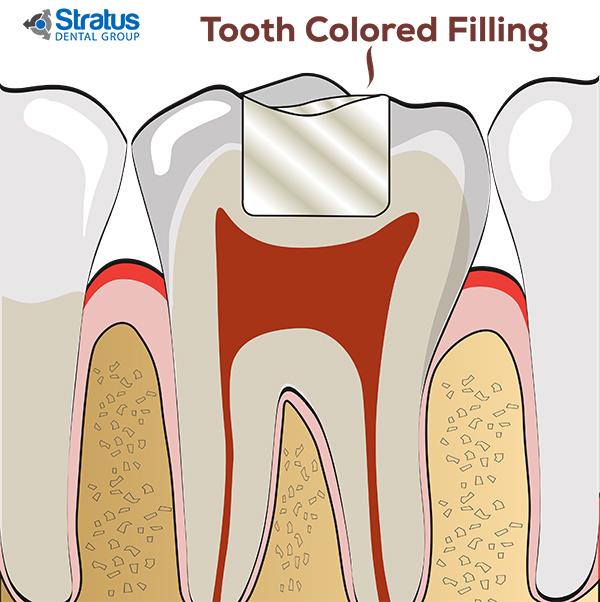
Approximately 92% of adults have experienced a cavity. Cavities occur as a result of tooth decay, and if left untreated, they can severely damage teeth and lead to a decline in oral health. Though cavities are common, at Valencia Dental Artsdentist Dr. Jason Ohand Dr. Lucia Chia can easily fix them using a routine, restorative dental treatment called a dental filling, also known as a tooth filling.

What Is a Dental Filling?
A dental filling can be made out of a variety of materials and is used to fill and seal the hole caused by a cavity, preventing decay from spreading to the rest of the tooth. Drs. Jason Oh and Lucia Chia quickly, easily, and comfortably removes decay from a tooth before it progresses. The type of tooth filling that is used is largely based on your needs and preferences.
Types of Fillings
You are probably most familiar with gold and silver/amalgam fillings, but these are only two of several options you will have if you find yourself with a cavity. Though both gold and amalgam fillings are good cavity treatments, they also stand out against the pearly whites they are preserving and protecting. Fortunately, there are less obvious alternatives available. Filling options include:
- Amalgam fillings: Amalgam tooth fillings are affordable and durable, able to last 10 to 15 years or longer. Because they are made of silver, they do not match the surrounding tooth and may stand out.
- Gold fillings: Gold tooth fillings are very durable and last at least 10 to 15 years. Though they don’t match the surrounding tooth, some prefer the coloring and shine to that of amalgam fillings. Gold fillings tend to cost more than other materials.
- Composite resin fillings: Composite tooth fillings are made from a mixture of plastic and fine-glass particles. They last at least five years and match the color of your teeth. They generally cost less than gold fillings but more than amalgam fillings, and they can take up to two appointments to complete.
- Porcelain fillings: Porcelain tooth fillings last approximately five to seven years, with a wide range of pricing. They match the color of your teeth and are more resistant to staining than composite fillings.
FAQ
Q: Do fillings ever need to be replaced?
A: Though they are very durable, most fillings will need to be replaced eventually. How long they last depends heavily on the type of filling you get.
Q: Does it hurt to get a filling?
A: Dr. Jason Oh and Dr. Lucia Chia can perform both the removal of the decay and the filling placement in such a way that you will remain comfortable and free of pain.
Q: How long will it take for me to be able to eat, speak, brush, and floss as usual after receiving a filling?
A: Shortly after receiving a filling, you should be able to do all of the things you normally would do.


